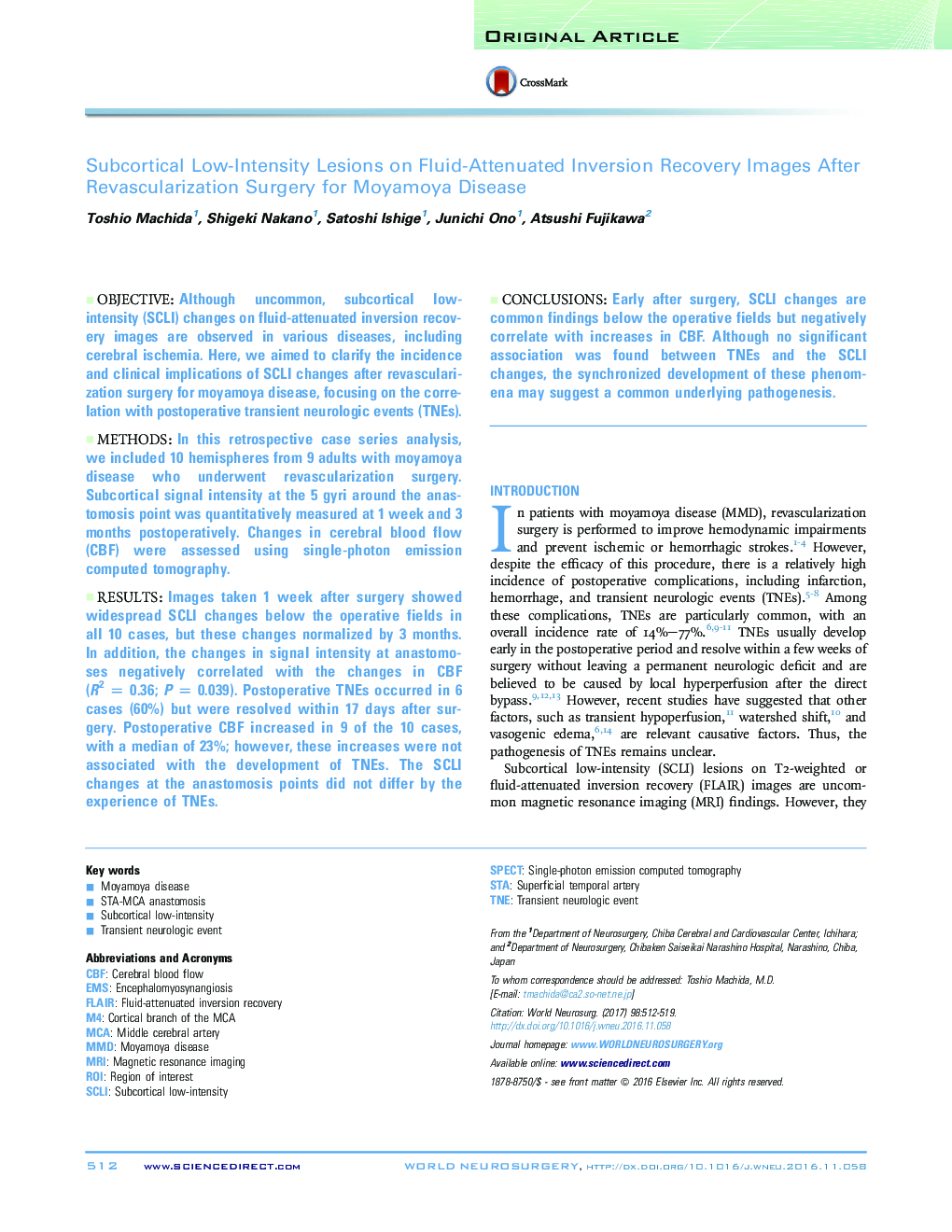| Article ID | Journal | Published Year | Pages | File Type |
|---|---|---|---|---|
| 5634959 | World Neurosurgery | 2017 | 8 Pages |
ObjectiveAlthough uncommon, subcortical low-intensity (SCLI) changes on fluid-attenuated inversion recovery images are observed in various diseases, including cerebral ischemia. Here, we aimed to clarify the incidence and clinical implications of SCLI changes after revascularization surgery for moyamoya disease, focusing on the correlation with postoperative transient neurologic events (TNEs).MethodsIn this retrospective case series analysis, we included 10 hemispheres from 9 adults with moyamoya disease who underwent revascularization surgery. Subcortical signal intensity at the 5 gyri around the anastomosis point was quantitatively measured at 1 week and 3 months postoperatively. Changes in cerebral blood flow (CBF) were assessed using single-photon emission computed tomography.ResultsImages taken 1 week after surgery showed widespread SCLI changes below the operative fields in all 10 cases, but these changes normalized by 3 months. In addition, the changes in signal intensity at anastomoses negatively correlated with the changes in CBF (R2Â =Â 0.36; PÂ = 0.039). Postoperative TNEs occurred in 6 cases (60%) but were resolved within 17 days after surgery. Postoperative CBF increased in 9 of the 10 cases, with a median of 23%; however, these increases were not associated with the development of TNEs. The SCLI changes at the anastomosis points did not differ by the experience of TNEs.ConclusionsEarly after surgery, SCLI changes are common findings below the operative fields but negatively correlate with increases in CBF. Although no significant association was found between TNEs and the SCLI changes, the synchronized development of these phenomena may suggest a common underlying pathogenesis.
